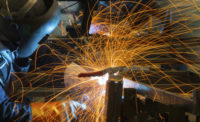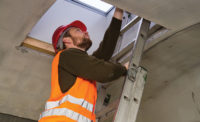During emergencies at facilities, a lot of different fast-paced activities are often happening simultaneously. Objectives can include accounting for all personnel, putting out a fire, containing a chemical release, coordinating with outside resources and many others.
Then reporters and news crews start to arrive at the scene. They usually only have one objective: deliver a fast-breaking news story. Facilities prepared to speak with the media and make doing so a pre-planned and well-practiced part of their emergency response plans can utilize the media as a resource to communicate critical information and promote safety while helping media outlets meet their objective at the same time.
Multimedia exposure
News reporters and crews arriving at the scene of an incident are viewed by some as a distraction, or as one more thing that is being piled on an already overflowing plate. If the facility doesn’t have plans for how to handle the media and has not practiced how to interact with them, they may be exactly that.
Anticipate and incorporate media presence into your drills to provide reporters with the information they need to meet their deadlines. Preparing for the media has become multi-faceted. It’s not simply a television crew or two arriving at the scene anymore. Social media outlets can also quickly become saturated with photos, videos and chatter.
Briefing the media
The media and the facility have different objectives. Reporters are there to cover a story. To do that, they need accurate information that is delivered in a timely manner.
Establishing an area for the media facilitates information sharing and helps to ensure that a consistent, timely message is presented through all media channels. It needs to be near enough to the incident to provide context for what is happening. But it should be secure and far enough away from access routes to allow emergency responders to perform their duties without interruption.
A coordinated approach to addressing the media in a timely manner at an established location helps to minimize rumors on social media channels by providing consistent, accurate, complete and timely information from verified sources.
Messages for the media
When media has been successfully gathered in one area, it is easier to utilize them as a resource for getting important safety information out to the public. In a large-scale event, they can also provide information about reunification areas or shelters that have been established.
Because reporters will be creating news stories for the general public, it helps to provide short, easy-to-understand statements about the events that are happening. People want to know what happened, how this could affect them and what the facility is doing about it.
In general, reporters won’t have much experience with the facility’s operations. Providing press kits that include general information about the company and products produced can help to prevent spending a lot of time answering these types of questions during news briefings.
Pre-scripted messages
Preparing responses and alert messages in advance in a low-stress environment helps facilities to deliver accurate information that is concise and specific. Pre-scripted messages also allow emergency and other supporting information to be quickly posted on social and distributed through other media channels.
No matter how well the facility anticipates the types of information that will be needed following an emergency, not every question can have a pre-scripted answer. For example, knowing what caused a fire or knowing how many people (if any) were injured will be specific to the incident.
Designating a speaker
No reporter wants to stand at a fence trying to guess what might be happening. They want to speak to someone. Designating and training someone at the facility to speak to the media is an essential part of pre-planning. This person is sometimes called a Public Information Officer (PIO).
Having a PIO and training everyone else at the facility to direct all media inquiries to the PIO prevents misinformation from being communicated and helps to ensure that all messaging to the media remains accurate and coordinated. A PIO should be knowledgeable about operations and chemicals at the facility. This individual needs to be accessible to the media, proactive, credible, flexible and able to speak with authority in high-stress situations.
Because this person needs to be accessible to the media at all times; in most cases, the PIO will not be a company president – although, the president may deliver prepared press releases as an event progresses. Facility PIOs need to be trained to speak effectively in public and recognize that everything they say is “on the record.” They should also be familiar with basic emergency management concepts and able to educate the media and public about safety and other topics related to the facility and the incident.
Like other aspects of emergency response, PIOs need to practice delivering their messages and briefing the media. Inviting local news media personnel to drills is a great way for the PIO to learn the types of questions that reporters may ask and work through the nervousness that can come from having to face multiple cameras. Reviewing these interviews after the drill can strengthen information that is included in press kits and uncover additional information that can be prepared in advance.
Emergencies are a time when emotions and adrenaline traditionally run high. Preparing a PIO to speak with the media and recognizing the media as a resource to help the facility deliver timely, accurate information minimizes distractions for emergency responders and helps to prevent chaos.






